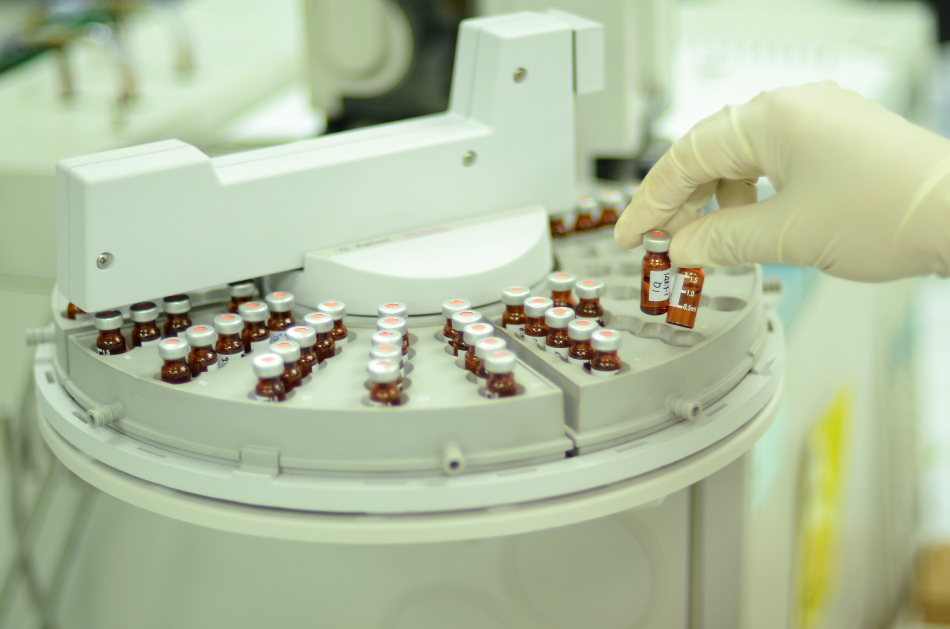
Image Credit: khawfangenvi16/Shutterstock.com
Chromatography is an analytical technique that is used to separate and analyze complex mixtures. Chromatography works by distributing the components of a mixture between two phases, known as the stationary phase and the mobile phase. Liquid chromatography uses a liquid mobile phase, with the stationary phase being on a planar surface or packed into a column.
High-performance chromatography (HPLC) and ultra-high-performance liquid chromatography (UHLPC) are two of the most popular liquid chromatography techniques. HPLC and UHPLC have stationary phases that are packed inside a column, and the liquid mobile phase passes through it. The components of interest are separated based on polarity, with the columns and mobile phases chosen being dependent upon the chromatography method that will be used for analysis.
Columns for HPLC and UHLPC can be split into different categories depending on their packing and particle technologies. Every column category has multiple advantages and disadvantages depending upon what needs to be separated and analyzed.
Fully Porous Columns
Fully porous spherical silica particles are widely used with HPLC and UHPLC. Fully porous particles work like a sponge, with a sample diffusing in and out of the pores as it interacts with the stationary phase and causes separation.
The advantages and disadvantages of using fully porous columns are:
Advantages
- Wide variety of stationary phases available
- High mechanical strength
- Good efficiency
- Good for higher pH
Disadvantages
- Dissolution of silica above a pH of 7.5
- Hydrolysis of bonds when the pH is less than 1.5
- Residual silanol activity can cause peak tailing
Some of the disadvantages of fully porous columns can be overcome with modification. Siloxane bridges can be replaced with organo-silica bridges, such as an ethane linkage, to allow for a longer column lifetime at a higher pH.
Core-Shell Columns
Core-shell columns contain core-shell particles, also known as superficially porous particles. The columns have an inner solid silica impermeable core that is surrounded by an outer porous layer of silica which forms the outer shell. A big difference between fully porous and core-shell particles is that diffusion only occurs through the porous, outer layer of the particle and not the entire particle.
The advantages and disadvantages of using a core-shell column are:
Advantages
- Increased efficiency due to short column length
- Fast analysis times
- Improved sensitivity compared to fully porous particles
Disadvantages
- Method transfers can be time-consuming
- Requires dedicated instrumentation that can work at high pressures
Monolithic Columns
A final type of chromatography column is the monolithic column. Monolithic columns are made from one single piece of either porous silica or an organic polymer instead of lots of small silica particles. The single rod has a defined structure of mesopores and macropores. The macropores are similar to the interstitial volume of the particle-packed columns. It is the macropores that determine the permeability of a column. The mesopores of a monolithic column are on the silica particle surface or in the silica skeleton.
The advantages and disadvantages of using a monolithic column are:
Advantages
- Low pressures due to high porosity
- Little sample preparation needed
- Direct injection possible due to microporous structure
- Good for dirty samples
- No instability from bed shifting
Disadvantages
- Not many stationary phases available
- Efficiency not as good as fully porous columns
- Known to have issues with reproducibility
References and Further Reading
Disclaimer: The views expressed here are those of the author expressed in their private capacity and do not necessarily represent the views of AZoM.com Limited T/A AZoNetwork the owner and operator of this website. This disclaimer forms part of the Terms and conditions of use of this website.